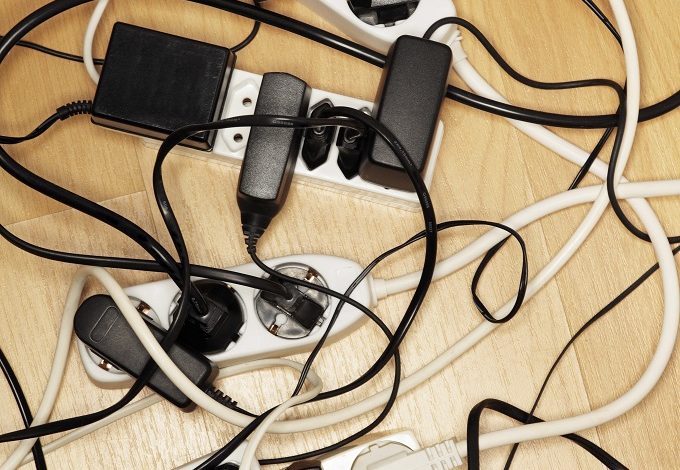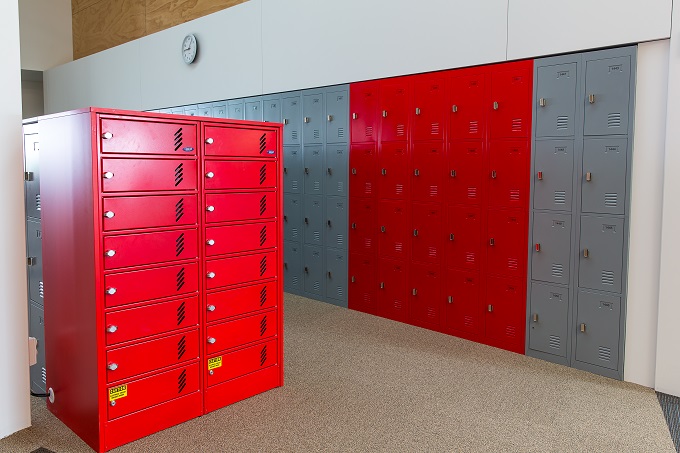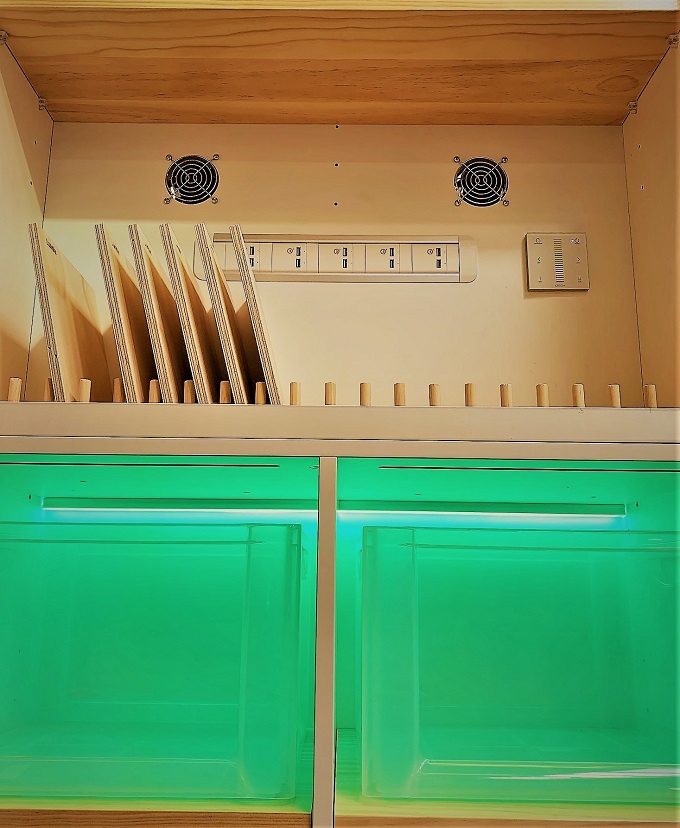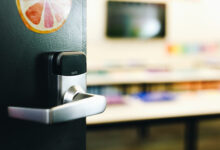Innovative storage for flexible tech teaching
There was a time when people thought ‘paperless schools’ would usher in the end of filing.

Au contraire! Technology-focused schools require more storage than ever.
Whether it’s student laptops or classroom smart devices, charging facilities or robotics equipment, there’s a lot of new ‘stuff’ to secure and store. The growth of outdoor learning and modern learning environments also mean that schools have to get more creative about how to store all this technology and how to charge devices between uses.

Here are some options we found that are available to New Zealand schools….
Laptop lockers and trolleys
Students use laptops in almost all learning areas, so fast charging capabilities are essential. There’s a reason everybody scans the room for a power outlet before choosing their seat: most buildings were not designed to have 30+ devices plugged in at the same time. Times have changed and enabling students to top-up devices, without creating a spider web of cords strewn around the floor, is key. Laptop lockers and device trolleys can help achieve this. They allow you to plug laptops and devices into individual, lockable slots where they will charge during breaks.

Laptop lockers are ideal for classrooms and libraries where devices do not need to be shared around the school and can live in their designated rooms. Tagging devices to their slots can assist IT, should any go missing or become faulty. Permanent lockers are designed not to overheat, usually with a perforated back or side, and offer fast-charging so that students using them later in the day don’t miss out.
Laptop trolleys offer a similar functionality but can be transported around the school. Handy and secure, they are ideal for use in a modern learning environment or during outside activities. Many of these trolleys have power settings to avoid overloading laptops as overcharged batteries weaken over time. They also require just one outlet to power all of the devices; standard trolleys will hold between 20 and 35.

Technology storage for teachers
There are some flashy and exciting storage options for classroom technology in 2019 as electronic teaching aids and flexible learning environments become the norm. As with ILEs, school technology storage prioritises multi-functionality but is there a closer relationship between the two?
Dr Terry Byers recently wrote about research published in The British Journal of Education Technology. He details a study of the relationship between classroom layout and technology use, where teachers in ILEs were better at integrating technology into their practice. In traditional forward-facing classrooms, on the other hand, teachers were more likely to use technology as a content delivery tool.
Flexible technology storage takes many forms. There are huge wall units that combine whiteboards with device storage, charging capability and even mood lighting. These are great for locking away TVs and larger tools like printers. Mobile or floating storage options work well where wall space is limited and can be customised to store a variety of items; including projectors and special teaching aids, or fitted with pigeon holes and lockable drawers for BYOD schools or those implementing a phone ban.
Sector viewpoints
Distinction Furniture’s Suzanne Roxburgh-Blair took us through some exciting new trends and options for schools.
Flexible device management is available with adjustable slot designs in some carts, allowing schools the ability to customise their carts to best support their classroom technology. They need to be confident in a flexible, robust mobile charging unit with more than a 10-year structural warranty and a five-year electrical warranty.
Where school spaces have lots of windows, space for storage can be limited. Whiteboard units are ideal for storage if wall space is available, as they can be designed for all uses, i.e., storing portable devices, resources and student workbooks. Mobile storage, including cupboards and pigeon holes, are also used in open spaces for storage, should wall space be limited
For schools concerned about implementing a phone ban, teachers can store them in lockable solutions under-desk, or storage can be customised to suit with power boards for charging. Where flexible learning environments are concerned, depending on school needs, mobile storage can be customised in a wide variety of ways.
Lundia representative Gina Quensell spoke with us about maximising storage functionality.
Incorporating multifunctional options such as lighting, work surfaces, seating, charging ports, displays and discussion boards into your storage and shelving provides additional efficiencies by having items in closer proximity. It also strikes a balance, allowing student movement but keeping them engaged and energised in the environment.
The type of secure charging facility options that work well in schools with BYOD is independently accessible charging lockers. These are compact modules that can be stacked, banked or wall mounted and can charge smartphones, laptops and tablets.
A great way to encourage phones to be left out of the classrooms is to incorporate USB charging ports into student lockers. Having moveable charging pods in a learning space provides flexible and open access to power. Secure mobile or static charging cabinets provide transporting, storing and charging of devices all-in-one. Charging modules built into multifunctional units such as a secure centralised teaching modules, cube walls and shelving systems can seamlessly integrate into the space.









